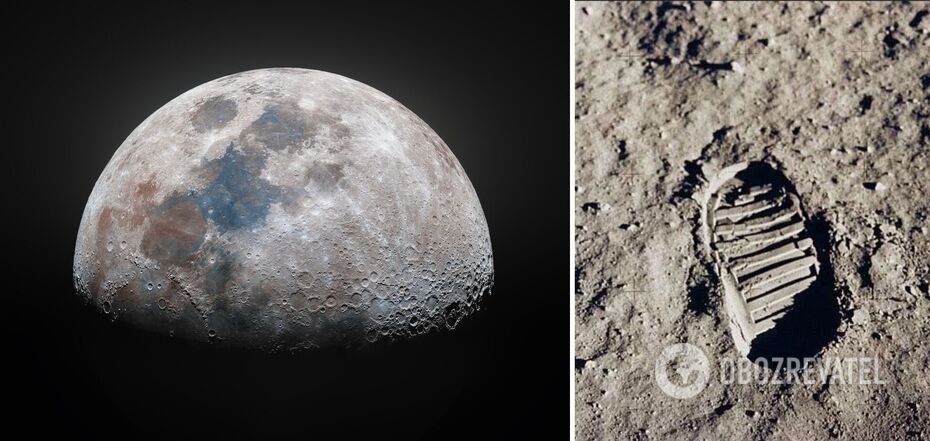Life
A child's trick could turn the moon into a water source for humans: but there's a problem
Water, which is one of the most important resources for the existence of complex life forms (at least on Earth), is quite rare in our solar system, which poses a problem for future space travel. But perhaps this problem can be solved by using a childish trick that will make it possible to get water in liquid form on the Moon, Mars, and other planets.
According to an article in Universe Today, the concept in question is thermal mining, which was invented by space resources expert and professor of mechanical engineering at the Colorado School of Mines (CSM) George Sowers. His idea is extremely simple - you just need a large enough magnifying glass or mirror.
There are two problems for space travel, water and air, which astronauts will need on other planets. Although both of these problems can be reduced to one, as mankind is able to easily convert water into oxygen. So in fact the biggest unsolved problem is actually water. It's heavy, so it can't just be loaded into a rocket and taken along.
But, as scientists suggest, there may be a fairly simple solution to this problem. Mankind knows that water in the state of ice is definitely on the Moon, Mars and beyond. So Sowers proposed the simplest solution: why not use a relatively large mirror to aim a beam of sunlight at the ice and vaporize it. As kids, most of us played with a magnifying glass and know that by concentrating a beam in this way, you can start a fire or engrave your initials on wood. With a mirror it will work a little differently, but the effect will be the same - heating ice.
However, simply heating the ice and letting it evaporate is only part of the plan.
If you heat an area containing ice that is in a vacuum, that ice will sublimate into water vapor and begin to be released from the surface. This water vapor Sowers proposes to trap with a cold trap or other similar mechanism and then collect the water, which could be used for drinking, turning it into oxygen, or even fueling rockets.
So the whole idea has three components:
- aheliostat - a mirror that can follow the sun without losing its beam;
- agiant tent that will collect freeze-dried water;
- acold trap/transportation system that would capture water flowing from the surface.
The big plus of this idea is that these are not high-tech inventions, the development of which will take years. But the effectiveness of such a system still needs to be tested and proven.
Sowers and his team suggest that, in addition to the Moon, this technology could work on Mars, where the presence of water ice has been repeatedly proven; Ceres, from whose surface jets of water vapor are ejected; and two main belt asteroids, 24 Themis and 65 Cybele, both of which are believed to be covered in ice.
But the Moon still remains the most promising. The moon's permanently shadowed regions are thought to hide much of the Earth's satellite's 600 billion kilograms of water.
Sauer's team has already tested their method on lunar regolith, in which chunks of ice were hidden by hand and then placed in a vacuum chamber that was cooled with a bath of liquid nitrogen.
It was during this test that two problems came to light.
The test setup was relatively small, so the liquid nitrogen cooling system was very close to the sample to be heated. As a result, it turned out that most of the heat that was supposed to heat the sample was heating the liquid nitrogen. However, as the scientists are convinced, this would not have happened on the Moon because everything there is too cold, so the heat would act exactly where it needed to.
The other problem turned out to be more complicated. In a relatively short time, the thermal extraction method created a dried layer on top of the regolith that acted as a thermal barrier to water that might linger below. This layer not only prevented heat from penetrating the interior, but also prevented water that turned to vapor from rising to the top, where it should be collected by cold traps. However, Sauer is convinced that this problem could be solved as well.
The biggest problem, traditionally, has been convincing officials that the financial cost of such water extraction would make sense. Sowers estimates that the entire operation would cost $880 million, with another $613 million in production costs.
Sowers admits that the business case is one of the riskiest parts of his idea because it requires a demand that doesn't yet exist. But that could change when NASA sends the Artemis mission to the moon.
Earlier OBOZREVATEL told about the fact that water from the lunar regolith can be extracted even thanks to an ordinary household microwave.
Subscribe to OBOZREVATEL channels in Telegram, Viber and Threads to be aware of the latest events.



























